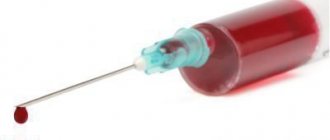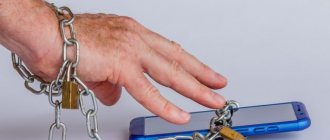How not to be afraid to donate blood from a vein or finger - effective techniques for overcoming fear
Psychotherapeutic techniques help you to approach analysis calmly.
Technique “Imagine: there is no fear”
Blood can be made “not scary” by doing the following simple but effective mental therapy. Let's imagine that we are going for analysis. Everything goes as smoothly as possible. A friendly nurse gets the job done quickly. And the “terrible unbearable” pain is weaker than a mosquito bite.
“Measured portions” of blood donation videos also help. The videos will gradually instill “immunity” to “bloody” spectacles, and hemophobia will begin to disappear.
Technique "Utility"
Is as follows:
- We instill the idea of the usefulness of surrender. We visualize the laboratory, imagine how doctors study the analysis and examine it under a microscope.
- We bring to the subconscious: the procedure is a great benefit, the test helps prevent and detect diseases.
To make auto-training more effective, we need the help of a specialist. During the sessions of the experienced hypnologist Nikita Valeryevich Baturin, it will be possible to gradually dispel the phobia and remove fear from consciousness forever.
Relaxing breathing technique
Techniques related to breathing control are effective for the treatment of hemobophyia. A simple deep exhalation exercise will help bring panic under control. The main thing in the exercise is that the exhalation is longer than the inhalation.
When a person exhales, the body relaxes, when inhales, it tenses. Therefore, if you “stretch” your exhalation, the hemophobe will relax and become calmer.
Tension technique
This specific technique works well in combating fainting, the most unpleasant symptom of hemophobia, accompanied by a sharp drop in blood pressure.
The technique is as follows: we strongly strain the muscles of the chest, arms, and legs so that the face becomes flushed and the blood pressure quickly rises. We use hardware. At the same time, we watch a video where blood is taken from a finger and vein.
Behavioral cognitive therapy
In addition to the techniques described above, behavioral-cognitive therapy helps well against hemophobia. Together with a behavioral psychotherapist, a person changes his attitude towards analysis and begins to understand that there is nothing wrong with the procedure. The specialist gradually helps the person suffering from a phobia to “replace” panicky thoughts associated with analysis with more “realistic” ones.
Psychoanalysis
Psychoanalysis is also effective. Together with the psychoanalyst, the client searches for the cause of the appearance of fear, clears the mind of the attitude to be afraid, realizes it, and overcomes it. Many useful exercises are posted on YouTube.
Remember! Medications (antidepressants, tranquilizers) are rarely prescribed for hemophobia. Pathology is considered a problem that can be effectively dealt with through psychotherapy alone.
Myth No. 7. Blood can be donated after x-rays and ultrasounds
Actually: No, you can't
These types of studies can lead to activation of metabolic processes and distortion of research results. It is strictly not recommended to conduct laboratory tests not only after X-rays, ultrasound, but also after surgery, injections, infusions, blood transfusions, punctures and biopsies of various locations, massage, ECG, hemodialysis, ergometry, immunoscintigraphy, procedures that use ionizing radiation, endoscopic studies.
Symptoms of the disease
Many people are not even aware of their phobia, perceiving their condition as the norm. This approach to the problem is categorically wrong. Without awareness of your fear, you will never be able to get rid of it.
People with this phobia experience the following reactions when undergoing testing:
- dizziness;
- fainting;
- nausea;
- chills;
- numbness of the limb;
- sudden sweating;
- panic attacks.
If a child suffers from the disease, he usually experiences increased agitation, screaming, crying, and hysterics. If the above symptoms are present, a routine examination will be a real test for the patient.
Myth No. 2. You can eat an apple or drink a glass of juice before drawing blood.
Actually: No, you can't.
Even a light breakfast, such as a portion of fruit or some granola, can distort the results of studies. There are a number of mandatory food intake restrictions:
- On an empty stomach: at least 4 hours after the last (not heavy!) meal.
- Strictly on an empty stomach: at least 8 hours after the last meal. In newborns and children in the first months of life, blood sampling is allowed no earlier than 2 hours after eating.
- Fasting: no food intake for at least 12 hours; fasting for more than 14 hours is not recommended. It is advisable not to overeat 1-2 days before taking blood; if possible, exclude fatty, fried foods and alcohol from the diet. If there was a feast the day before, reschedule the laboratory test for a couple of days.
- Drinking regime. Before taking blood for any type of research, it is not recommended to drink juice, tea or coffee. You can drink plain water, non-mineral and non-carbonated.
A fairy tale about how Little Gopher donated blood for tests
One day, Hedgehog was going about his urgent business and suddenly heard someone crying loudly under a raspberry bush. And since he was a very kind hedgehog and always tried to help those who were feeling bad, the Hedgehog, of course, stopped and looked under the bush.
There his friend Little Gopher was crying:
- Oh-oh-oh, poor me, poor me! Unhappy me, unhappy!
“What happened?” Hedgehog asked sympathetically. - Has there been any trouble?
- Even some! – Little Gopher sobbed in response. - Tomorrow my mother will take me to the clinic, and there... I have...
- Well, what do you have there - tell me quickly!
Here the Gopher, who seemed to have calmed down a little with the appearance of the Hedgehog, began to roar loudly again.
- They will take my blood there!
“How – all at once?!” Hedgehog was horrified.
- Nooooo, mom said they’ll take just a little bit, just one drop. For analysis.
“Uff, well, that’s a completely different matter,” Hedgehog exhaled. - Then why are you crying so much? Well, they take one drop - so what? After all, doctors need this to understand whether you are healthy or not, and if you are sick, that means they need to know how and with what to treat you. It's so simple!
Little Gopher tried with all his might to calm down.
- Yes-ah, “simple”! But it’s still scary!
And then the Hedgehog suddenly realized how to help the poor cowardly Gopher.
- That's what. Come with me. To the Little Wolf.
“Why?” asked Suslik. - Will he growl loudly, scare the doctors, and they won’t take blood from me?
“Oh, you stupid, stupid,” Hedgehog smiled. - No one will growl at anyone. I just remembered that quite recently the Wolf Cub also had his blood taken for tests. So, we’ll ask him how it is – it’s very scary and painful, or you can still endure it. Went!
And they went to the Little Wolf.
- Hello friends! - He was sincerely happy about the Hedgehog and the Little Gopher. -Have you come to play with me?
“No, Little Wolf,” answered the Hedgehog. - Sorry, but we have no time for games now. You see, the Suslik is crying. And he's shaking. Tomorrow they will take blood from him at the clinic. For analysis. And he is very afraid.
“Ah, now it’s clear,” exclaimed the Wolf Cub. – I was afraid of this too. And I’ll even admit to you: I cried a little when my mother brought me to the clinic.
“Well, you see,” Little Gopher turned to the Hedgehog, “The Wolf Cub was afraid too!” And I’m a very small gopher, which means I’m even more scared!
And he was about to roar again.
- Stop crying! - said the Wolf Cub. - You'll still have time. You better listen to how it happened there.
And he told his friends how they took his blood. It turned out that it just sounds so terribly scary - “taking blood.” (Well, you must agree, what to do if it’s called that). But in fact, everything is quite simple. Auntie the doctor lubricated the Wolf Cub’s paw with a special solution - it didn’t hurt at all, then she took such a small little thing, and before the Wolf Cub had time to be properly scared, just like that! - and a drop of blood was already taken from him.
The gopher listened with bated breath. Then he asked the Wolf Cub:
- Come on, show me the paw from which they took your blood. Is there any wound left there?
- No, no! – the Wolf Cub answered proudly. - Here, look.
And he extended his right paw to the Gopher. Then he got a little confused:
- No, wait, it doesn’t seem like that’s a paw. Probably this one,” and showed another.
Then I became even more embarrassed.
- No, Suslik, I’m sorry, I don’t even remember from which paw they took the blood from me.
- Why? – both Little Gopher and Hedgehog were surprised.
The wolf cub smiled:
- Yes, because not a single paw hurts, and there is no wound left! That's why!
“Yeah, yeah,” Suslik drawled, “what if they take my blood not from a toe, but from a vein...
- So what! - exclaimed the Wolf Cub. “I was there, at the clinic, just saw how they took blood from a vein from Little Fox - he didn’t even make a peep!” He and I then ran together to play ball.
...The next day, after going to the clinic, Little Gopher gathered his friends - the Hedgehog and the Wolf Cub - and treated them to wonderful lingonberry jam. He was very grateful to them. Because it turned out that donating blood for tests is, in fact, not painful at all. And, if you think carefully, it’s not at all scary.
Author: Igor Chichinov
Other tales by Igor Chichinov:
A fairy tale about how the Hedgehog helped the Little Bunny stop being afraid of MRI
A fairy tale about magic bells
A fairy tale about a cowardly Hedgehog and a bad tooth
Causes of fear
Phobias never arise on their own. Often this is a consequence of experienced stress. Understanding what triggered your fear is already a big step towards overcoming it. The factors that caused the phobia can be divided into two groups: direct and indirect.
Direct (related to the type of blood, painful sensations during or after the analysis):
- low pain threshold: each person perceives pain differently (what is mild discomfort for one, unbearable torment for another);
- fear of consequences is associated with the same pain threshold (when donating blood from a finger, a person, due to his high sensitivity, loses consciousness, and then fear is caused not by the pain from the procedure, but by fainting);
- instinctive fear is genetic (when we see blood, we believe that this is a potential threat to our health).
Indirect (related to the tension of the modern rhythm of life):
- frequent stress;
- fatigue;
- lack of proper rest;
- information about negative events that often appears in the media.
Such factors become an ideal environment for the development of old fears and the emergence of new ones.
REMINDER Advice for those who are afraid of the sight of blood
In medicine, the fear of the sight of blood is called hemophobia (from the words hemo - blood and phobia - fear, fear). Hemophobes are generally impressionable, suspicious people with a fine nervous system, capable of sympathizing and empathizing with others, and possessing an artistic mindset.
The imagination of an individual with this disorder will draw a huge puddle of blood from a small speck of tomato juice. These individuals, as a rule, avoid visiting medical institutions and refuse therapeutic and preventive procedures. They are “controlled” by a strong anxiety that in hospitals they may see blood, and God forbid - it will be their own blood!
A miracle cure in such cases is communication with close friends, for whom procedures associated with blood collection and transfusion are commonplace. Having acquired the knowledge that all manipulations carried out in medical institutions are safe and painless, a person suffering from a mild degree of hemophobia significantly reduces the level of anxiety, and by the end of his studies this fear completely disappears.
Here are some more practical tips.
- Try to tense your muscles as much as possible, starting with the muscles of your arms, gradually using all the muscles of your body. Having reached the peak of tension and keeping your muscles toned, try to move your limbs. Practice these movements as often as possible to fix the exercise in your mind. The secret of this exercise is simple: during an attack of hemophobia, as a rule, blood pressure decreases, as a result of which the patient loses consciousness. When an attack of fear approaches, your brain will remind you of the training you have done, and you will automatically tense your muscles and “wave” your arms. At a critical moment, this will help improve blood circulation, thereby avoiding fainting.
- Vigorous exercise helps restore normal blood flow. As soon as you feel the critical moment approaching, start doing squats or jumping.
- An excellent method to prevent loss of consciousness is to learn to control your breathing. Practice a way to achieve hyperventilation. Take a deep breath, using your abdominal muscles, hold your breath for a few seconds and exhale forcefully. Without a break, take the next breath. Master a cycle of 10, building up to 20 inhalations and exhalations. Breathing exercises help to mobilize strength at the right time and take control of your emotional state.
- If you are tormented by your conscience about the fact that you want to become a donor, but due to an aversion to blood you simply cannot do this, we advise you to contact a specialist. After all, blood is something completely natural and it’s simply stupid to be afraid of it.
Symptoms of hemophobia
An individual with such fear is plagued by a whole “bouquet” of unpleasant physiological and mental symptoms. When a person suffering from a phobia undergoes the “torture” (surrender procedure), he:
- the breath stops, the heart starts to gallop;
- lips are shaking, with hands and veins it’s the same story;
- the legs become weak, and a person suffering from a phobia can easily faint.
Things are also bad mentally. Hemophobe:
- begins to worry terribly, and is seized by wild panic;
- madly wants to run away, hide, “wake up.” To someone suffering from a phobia, what is happening seems like a bad dream.
In children, the symptoms are slightly different. In babies:
- severe hysteria begins. The baby is screaming, crying;
- there is an attempt to hide. The baby clings to his mother and runs away. He asks for protection “from a bad woman with a scary needle.”
Physical manifestations of fear (headaches, indigestion) are also possible in children, but in a less prolonged severe form than in adults.











